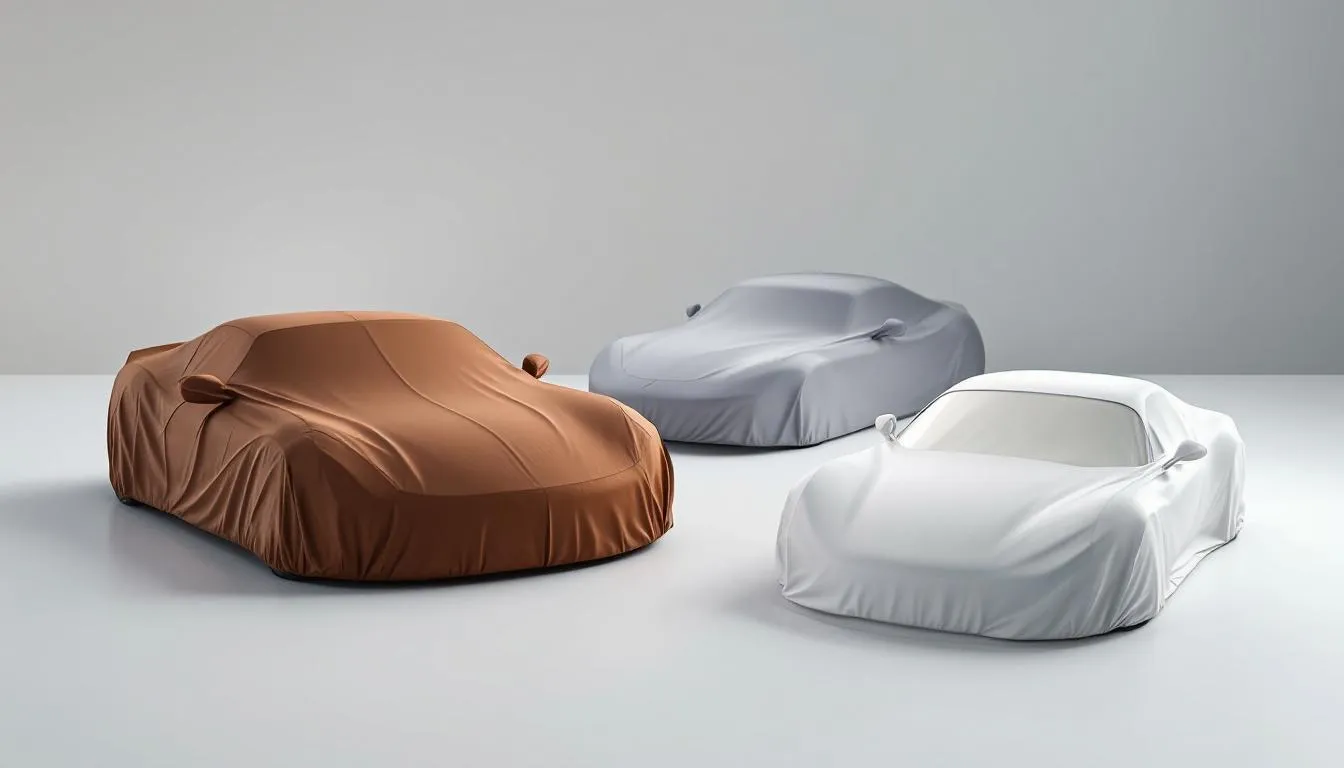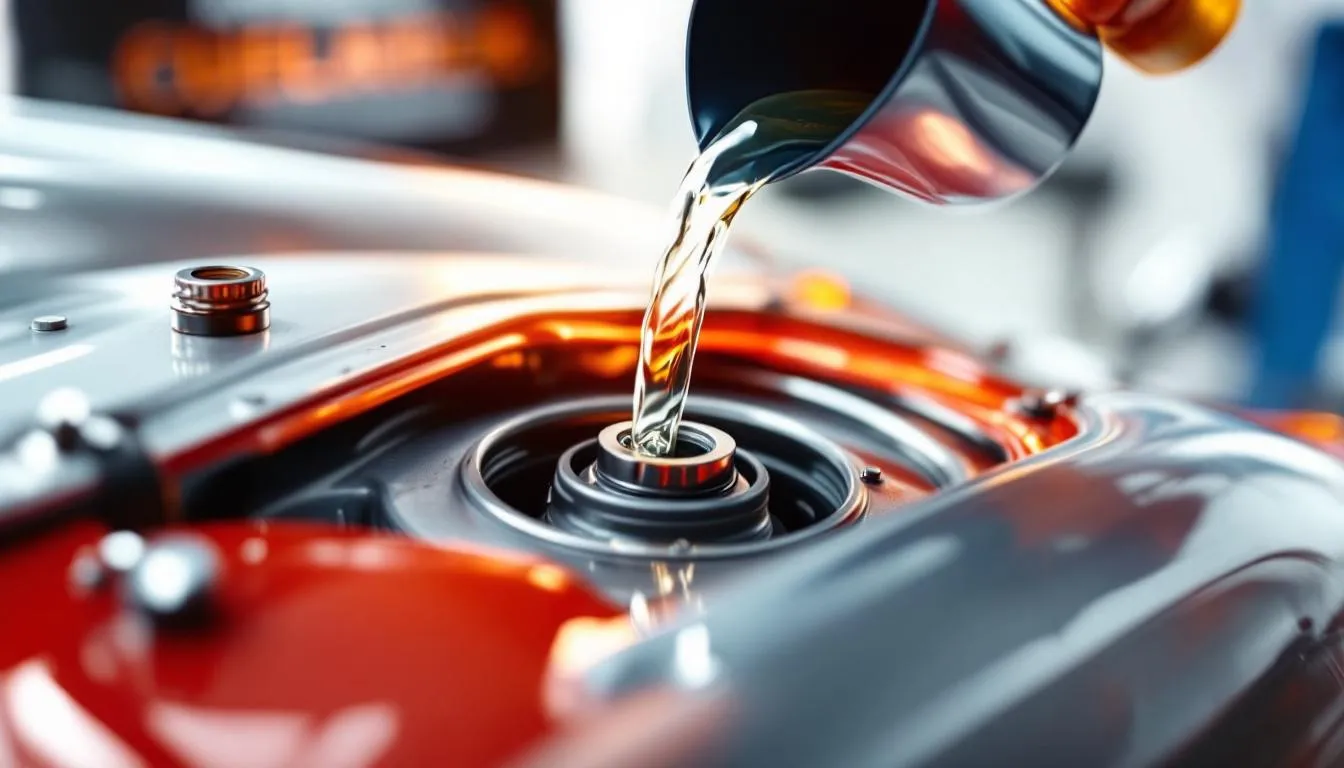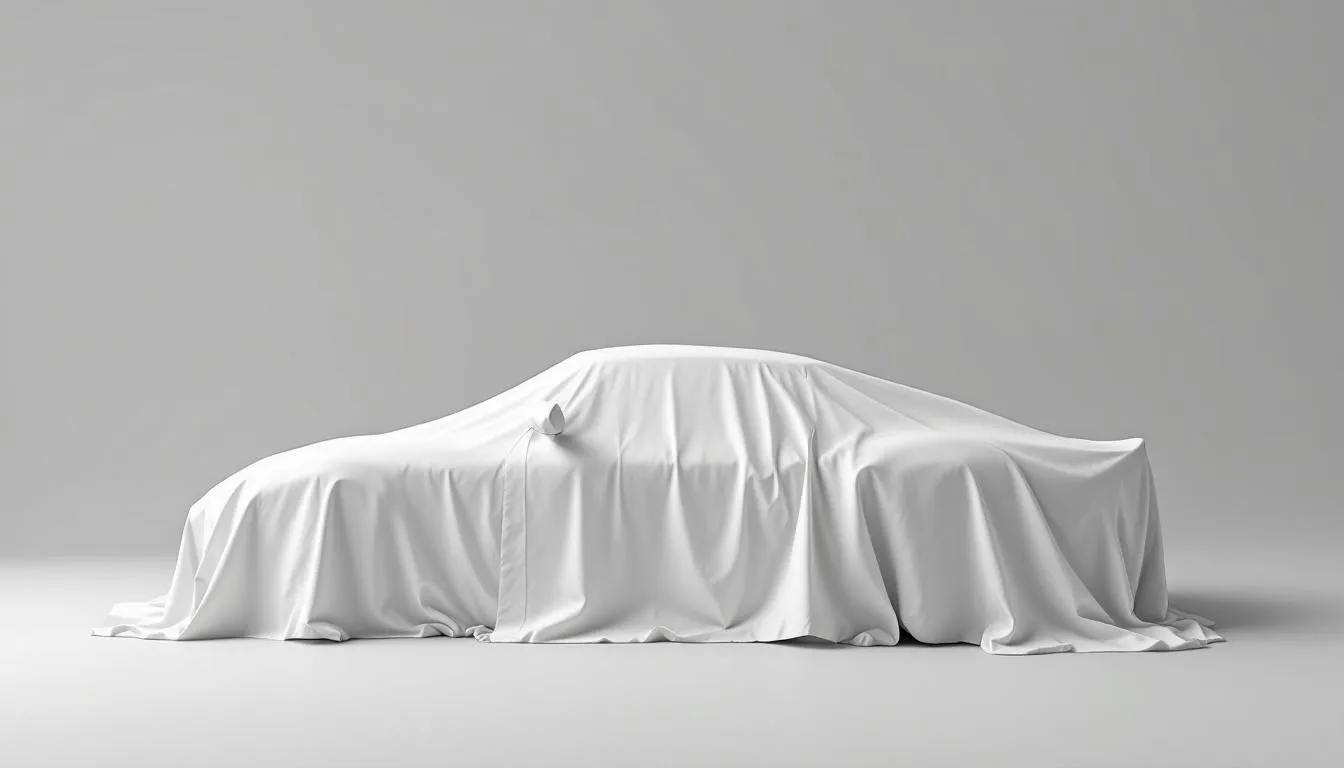Proper storage of your classic car is essential to maintaining its condition and value. This guide covers everything you need to know about how to store your classic car and keep it covered. From cleaning and inspecting to choosing the right cover, learn the best practices to keep your classic car in top shape.
Key Takeaways
- Thoroughly clean and inspect your classic car before storage to maintain its condition and address any potential issues.
- Use breathable, custom-fit car covers to protect your vehicle from dust, moisture, and UV rays, whether stored indoors or outdoors.
- Perform essential maintenance tasks such as changing fluids, filling the gas tank, and ensuring proper battery care to prepare your classic car for long-term storage.
Thoroughly Clean and Inspect Your Classic Car

Before storing your classic car, thoroughly clean and inspect it. Cleaning the car removes contaminants that could damage the finish, while an inspection helps identify and address any issues that could worsen over time.
This step helps maintain the car’s exterior and interior in pristine condition and keeps it in optimal shape during storage.
Wash and Wax the Exterior
Wash and wax your car’s exterior before storage by following these steps:
- Use a cleaner specifically designed for delicate finishes to wash your car by hand, including the underside, to remove all dirt and grime.
- Dry the car thoroughly to prevent water spots and rust.
- Apply a high-quality wax to add a protective layer to the paint.
This process enhances the car’s finish and protects it from the elements during storage.
Interior Cleaning
Cleaning the car’s interior is as important as the exterior. To properly clean the interior:
- Remove all food items and wrappers to prevent odors and pests.
- Vacuum the interior to eliminate dust and debris.
- Consider adding desiccants like silica gel packs to absorb moisture and prevent mold and mildew.
This ensures the car’s interior remains fresh and clean during storage.
Check for Leaks and Damage
Inspect your car thoroughly for leaks and damage before storage. Specifically, you should:
- Look for any oil, coolant, or other fluid leaks, as these can indicate underlying issues that need addressing.
- Check for loose components.
- Examine the brake lines for wear to prevent safety issues during the next use.
Document and address any necessary repairs before storage. Identifying leaks and damage early can prevent more significant mechanical problems in the future.
Regular inspections and maintenance keep your classic car in top condition for when you’re ready to use it again.
Use the Right Car Cover

The right car cover protects your classic car from dirt, UV rays, and moisture. A breathable car cover prevents moisture buildup, which can damage the car’s exterior and interior.
Custom-fit covers provide a better fit and more effective protection than universal covers.
Indoor Car Covers
Indoor car covers protect classic cars from dust and scratches. Choose breathable materials that prevent moisture buildup, ensuring the car’s finish remains intact. Avoid plastic car covers as they trap moisture and can lead to damage.
A quality indoor car cover keeps your car inside in pristine condition at a price in a climate-controlled garage.
Outdoor Car Covers
If storing your classic car outside, use a weather-resistant outdoor car cover. These covers:
- Shield against rain, snow, and UV rays, preserving the car’s exterior
- Are made from durable materials designed to withstand harsh weather
- Provide essential protection for your classic car
Custom-Fit Covers
Custom-fit covers, tailored to your vehicle’s shape, offer superior protection compared to standard covers. These covers ensure a snug fit, reducing the risk of the cover flapping in the wind and causing a scratch.
Investing in a custom-fit cover is a wise choice for optimal vehicle protection.
Fill Up and Treat the Gas Tank

Fill up the gas tank before storing your classic car to prevent moisture buildup and rust. Add a fuel stabilizer to keep the fuel system in good condition and avoid deterioration during storage.
This maintains the fuel system’s integrity, ensuring the car runs smoothly after storage.
Fuel Stabilizer Usage
A fuel stabilizer prevents fuel deterioration and harmful residue formation in the fuel system. Drive the vehicle for about 10-15 minutes after adding the stabilizer to ensure proper mixing and distribution.
This simple step extends the life of your fuel system and keeps your car running smoothly.
Preventing Moisture Buildup in the Tank
Filling up the gas tank prevents moisture buildup and rust, while putting a fuel stabilizer prevents fuel deterioration and corrosion.
Run the engine for a few minutes after adding the stabilizer to ensure thorough distribution, protecting your car from potential fuel system issues.
Change Oil and Other Fluids
Change the oil and other fluids before storing your classic car to prevent damage and corrosion during extended inactivity. Fresh oil and fluids provide better lubrication and protection for the engine and other components, maintaining the car’s performance and longevity.
Oil Change
To prepare your vehicle for storage:
- Change the oil to remove contaminants and sludge that could damage the engine during prolonged inactivity.
- Use oil with additives that prevent oxidation and sludge buildup, ensuring optimal engine protection.
- Run the vehicle for a few minutes after the oil change to circulate the new oil, providing better lubrication and protection.
An oil change is a small investment that can prevent costly engine repairs and is crucial for maintaining your classic car’s health during storage.
Topping Off Coolant and Other Fluids
Top off all fluids before storing your classic car, including:
- Coolant
- Brake fluid
- Transmission fluid
- Power steering fluid
- Windshield wiper fluid
This maintains optimal performance and prevents damage. Ensure coolant levels are adequate to avoid serious engine damage.
Proper fluid maintenance is critical for the importance of the longevity of your classic car, especially for classic car owners.
Protect Tires From Flat Spots
Flat spots occur when vehicle weight presses down on the tires for an extended period. Prevent this by checking the air pressure and inflating the tires to the recommended levels or higher.
Use tire cradles or jack stands to alleviate pressure and protect your tires from flat-spotting during storage.
Tire Pressure Check
Correct tire pressure prevents flat spots and keeps your classic car in optimal condition during storage. Check the tire pressure with a reliable gauge and inflate the tires to the manufacturer’s recommended levels before storage.
Monitor tire pressure regularly even in storage to catch any drops and adjust as necessary.
Using Jack Stands or Tire Cradles
Jack stands or tire cradles significantly reduce the risk of flat-spotting by relieving tire weight. Elevating the vehicle on jack stands prevents long-term tire damage and extends their lifespan.
This simple step maintains tire integrity during storage.
Battery Maintenance
Proper battery maintenance ensures your classic car’s electrical system remains functional during storage. Disconnecting the battery or using a trickle charger prevents natural discharge and preserves battery life.
This ensures your car starts easily when you’re ready to use it again.
Disconnecting the Battery
To safely disconnect the battery, turn off the ignition and remove the negative terminal first, followed by the positive terminal. This prevents drainage and keeps the battery functional during storage.
For newer cars with engine computers, leave the battery connected.
Using a Battery Maintainer or Trickle Charger
A battery maintainer or trickle charger keeps the battery charged at an optimal level, extending its life. Select a charger with an auto shut-off feature to prevent overcharging.
Apply petroleum jelly to the battery terminals to prevent corrosion, keeping your battery in good condition.
Lubricate Moving Parts and Seals
Lubricate moving parts and seals before storage to prevent stiffness and maintain functionality. Regular lubrication prevents issues caused by inactivity and keeps your classic car in top condition.
Lubricating Hinges and Locks
Apply a thin layer of automotive lubricant to hinges and locks to prevent rust and ensure smooth operation. Use white lithium grease or a silicone-based lubricant for long-lasting moisture protection.
Well-lubricated hinges and locks maintain their functionality during storage.
Protecting Rubber Seals
Protect your classic car’s rubber seals to maintain their flexibility and prevent cracking. Use a silicone-based product to preserve seals during storage.
A specialized rubber conditioner extends the life of seals and keeps them flexible, even in winter cold temperatures.
Choose the Right Storage Environment

The right storage environment is crucial for protecting your classic car. A climate-controlled garage or storage facility maintains a stable temperature and prevents wear from fluctuating conditions.
Here are the best practices to ensure your stored car remains in top condition while stored.
Climate-Controlled Garage
A climate-controlled garage offers the best protection for your classic car. To prevent moisture damage and other issues, consider the following storage tips:
- Avoid storing your car on damp surfaces like grass or dirt.
- Use garage mats or tarps to prevent moisture damage.
- Store your classic car at around 50 degrees Fahrenheit to prevent rust and damage.
If a climate-controlled environment is unavailable, use a dehumidifier and moisture-absorbing packs to manage humidity.
Ventilation and Humidity Control
Proper ventilation in your storage environment prevents moisture buildup. Ensure the building has a vented roof, eaves, and adequate window and door ventilation. Breathable indoor car covers also help keep the vehicle dry by allowing air circulation to build.
Filling the gas tank nearly full reduces air exposure, preventing condensation and moisture formation.
Covering Your Car Properly

Properly covering your classic car protects it from dust, moisture, and physical damage. The right car cover can make all the difference in preserving your vehicle’s finish and overall condition.
Choose a cover based on your storage conditions to decide for optimal protection.
Securing the Car Cover
Secure the car cover to ensure it stays in place and protects the car from damage. Use straps or weighted hems to prevent the cover from blowing off in strong winds. Weights or anchors can further stabilize the cover, ensuring it stays in place during severe weather.
Properly securing the car cover protects the car’s exterior from scratches and damage.
Regularly Checking Under the Cover
To maintain your car under a cover:
- Regularly check under the car cover to identify any moisture buildup or pest activity that could lead to damage.
- Clean the car’s interior.
- Use desiccants to prevent moisture buildup, rust, and mold.
Treat rubber seals and periodically inspect beneath the cover to protect your classic car from issues.
Additional Tips for Long-Term Storage
Along with the steps outlined above, consider these additional tips for long-term storage of your classic car:
- Change the oil and filter to safeguard the engine.
- Use fuel stabilizers to maintain fuel quality.
- Disconnect the battery to prevent drainage.
- Use a battery tender to maintain an optimal charge.
Using a garage mat or tarp underneath the vehicle can prevent moisture damage, and frequently inspecting under the car cover can help identify any issues early.
Using Plastic Sheets or Foam Insulation
Plastic sheets or foam insulation can serve as effective moisture barriers when storing your vehicle. Ensure these materials are placed securely under the car to protect the value against moisture damage.
Regularly check moisture levels in the storage environment, even with barriers in place, to ensure your car remains in top condition.
Keeping the Car Elevated
Using a car lift is an ideal storage solution for classic cars. It increases garage parking space and provides easy access to the vehicle’s underside, making maintenance simpler. This method offers a significant advantage for classic car enthusiasts.
Elevating the car also helps prevent flat spots on tires and protects the vehicle from moisture damage.
Summary
Properly storing your classic car involves a series of meticulous steps to ensure its preservation and functionality. From thorough cleaning and inspection to using the right car cover and maintaining the battery, each step plays a crucial role. Regular checks and proper maintenance are vital to keeping your classic car in pristine condition.
By following these best practices, you can ensure that your classic car remains a treasured piece of history, ready to hit the road whenever you are. Remember, the effort you put into storing your classic car today will pay off in its longevity and performance for years to come.
Frequently Asked Questions
Why is it important to fill up the gas tank before storing a classic car?
It’s important to fill up the gas tank before storing a classic car to prevent moisture buildup that can cause rust and to keep the fuel system in optimal condition. This simple step helps protect your investment.
How often should I check under the car cover during storage?
You should regularly check under the car cover to monitor for moisture buildup or pest activity, as these can cause damage to your vehicle over time. Maintaining this routine helps ensure your car remains in optimal condition while stored.
What is the best type of car cover for indoor storage?
The best type of car cover for indoor storage is a breathable one, as it helps prevent moisture buildup while protecting against dust and scratches. This ensures your vehicle remains in optimal condition during storage.
How can I prevent flat spots on my tires during storage?
To prevent flat spots on your tires during storage, ensure they are inflated to the recommended pressure or slightly higher, and consider using tire cradles or jack stands to relieve pressure. Taking these steps will help maintain the integrity of your tires.
Why should I change the oil before storing my classic car?
Changing the oil before storing your classic car is essential as it eliminates contaminants and sludge that can harm the engine during extended periods of inactivity. This proactive step helps ensure your vehicle remains in optimal condition when you’re ready to use it again.
